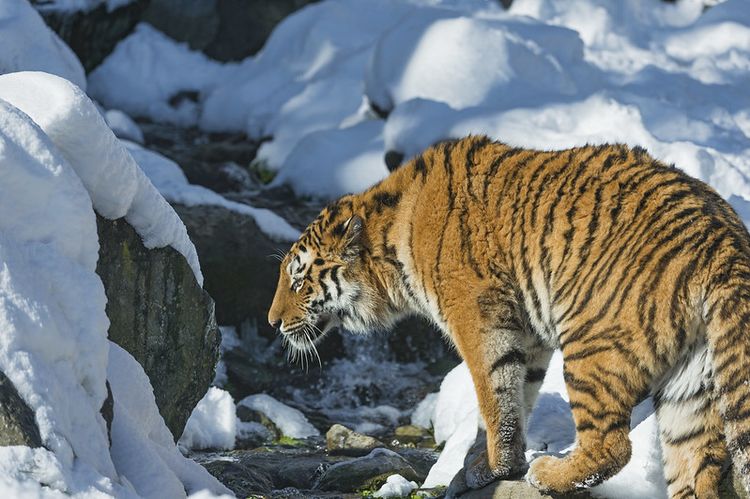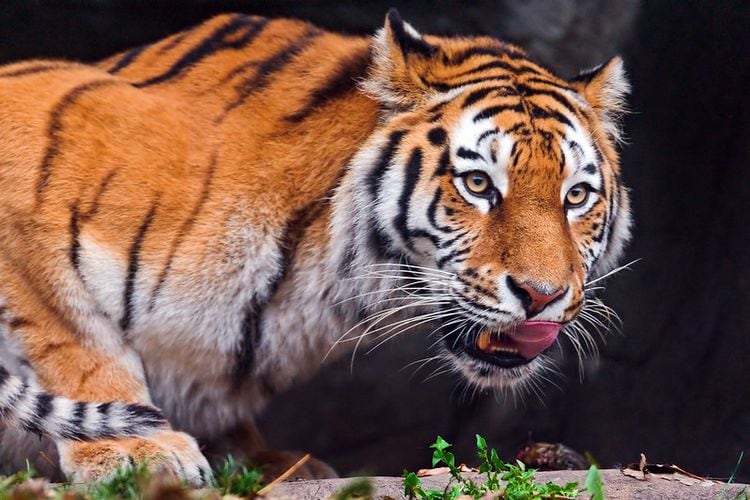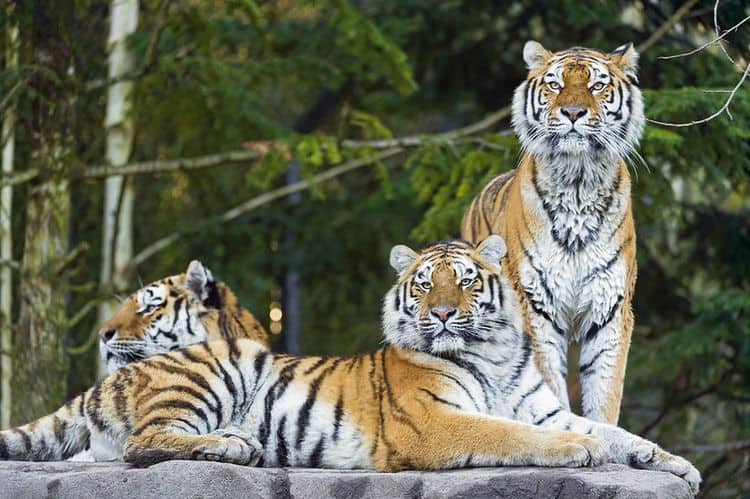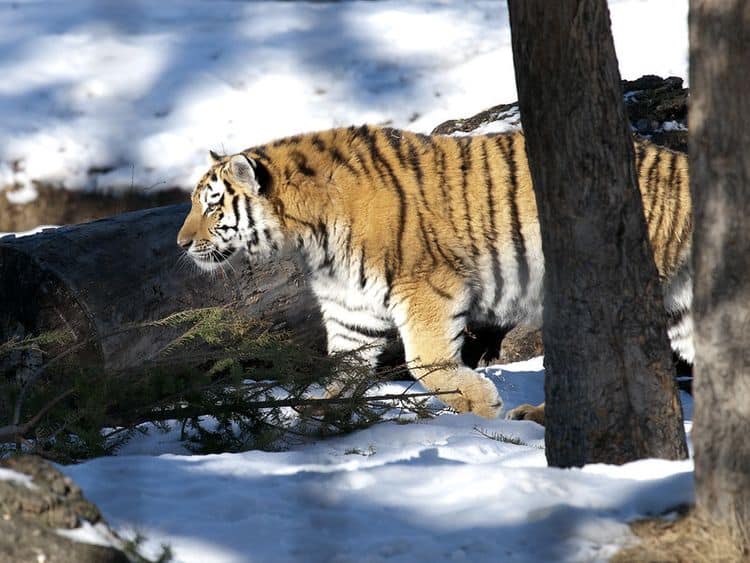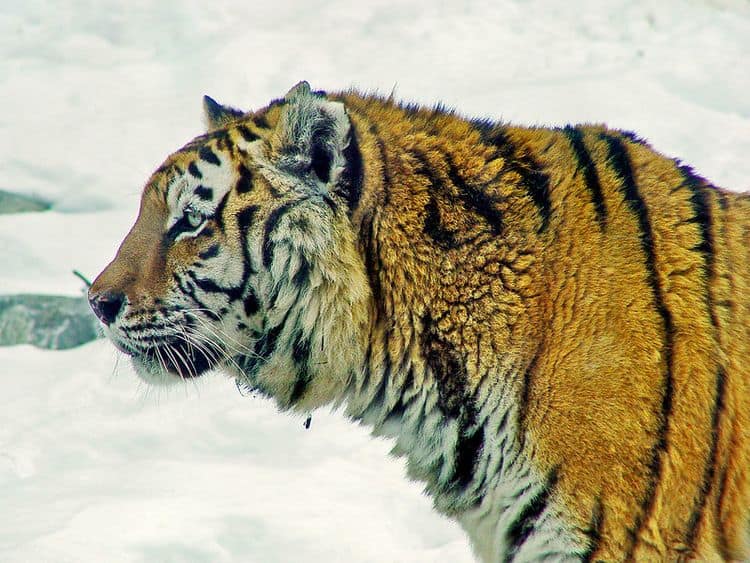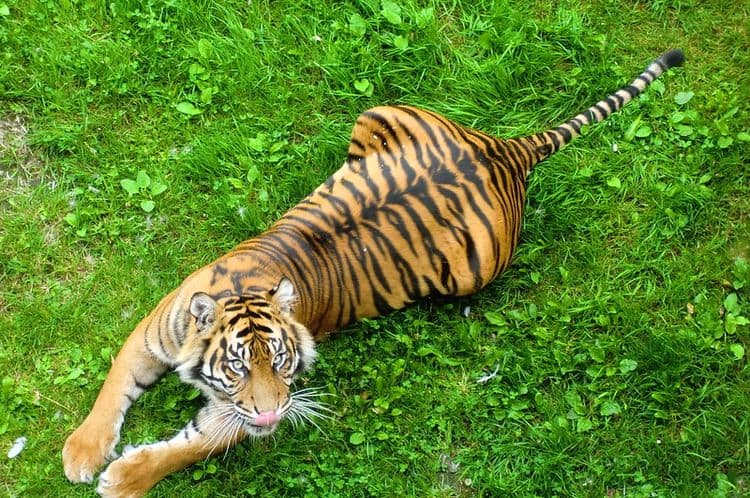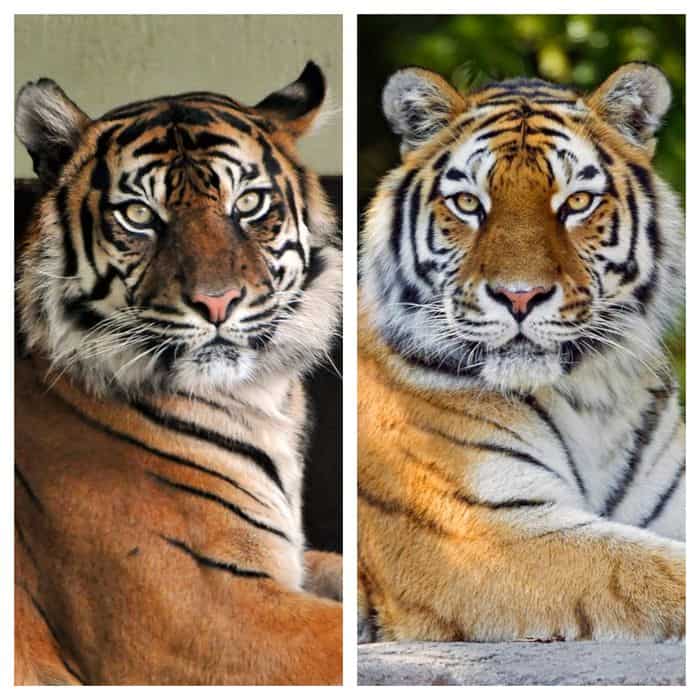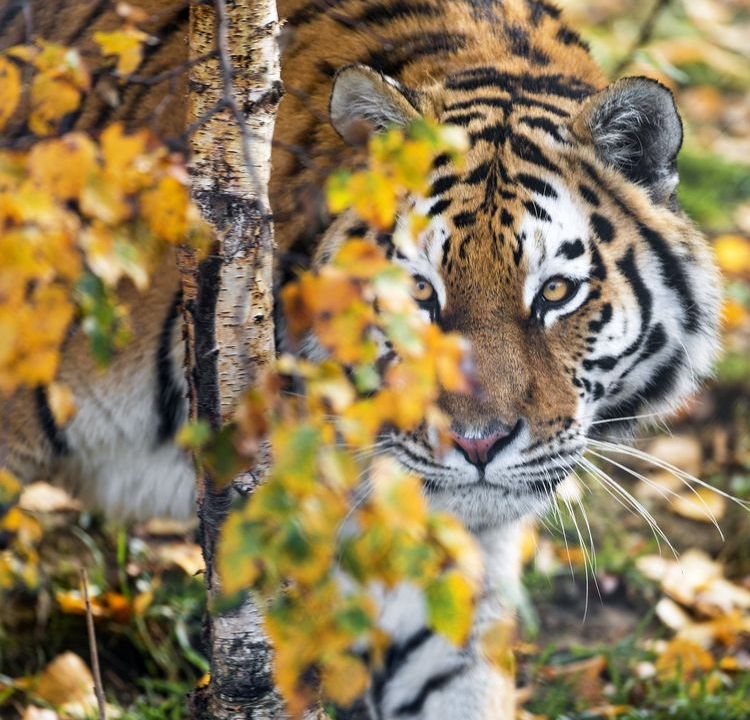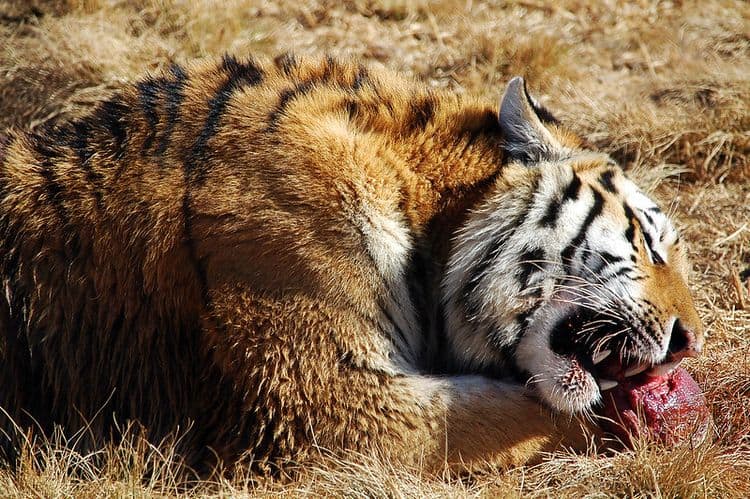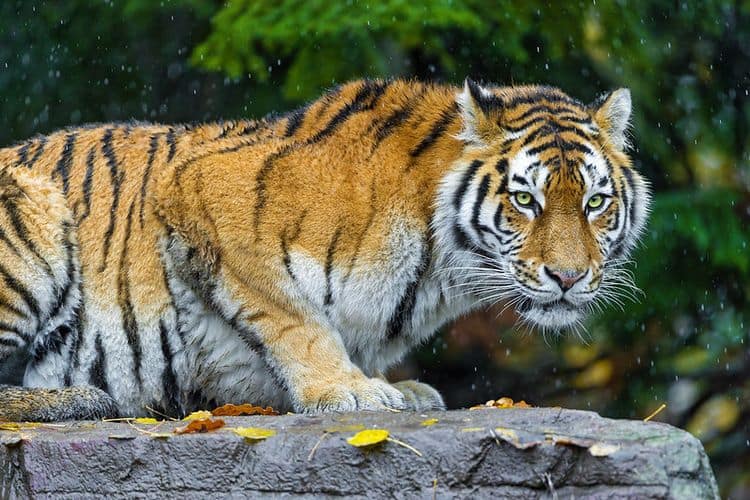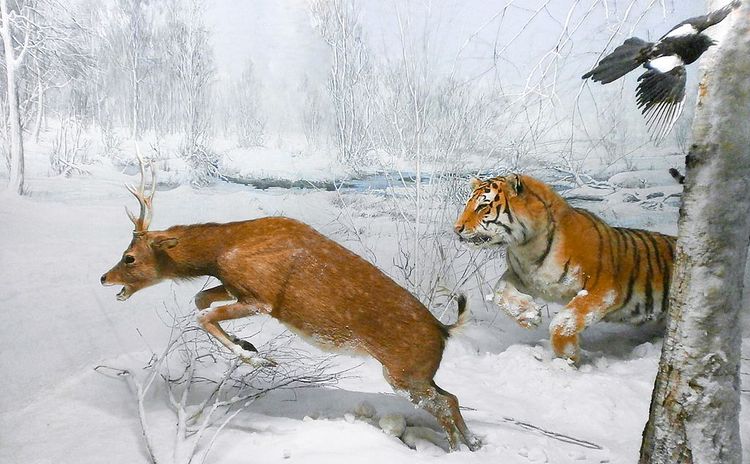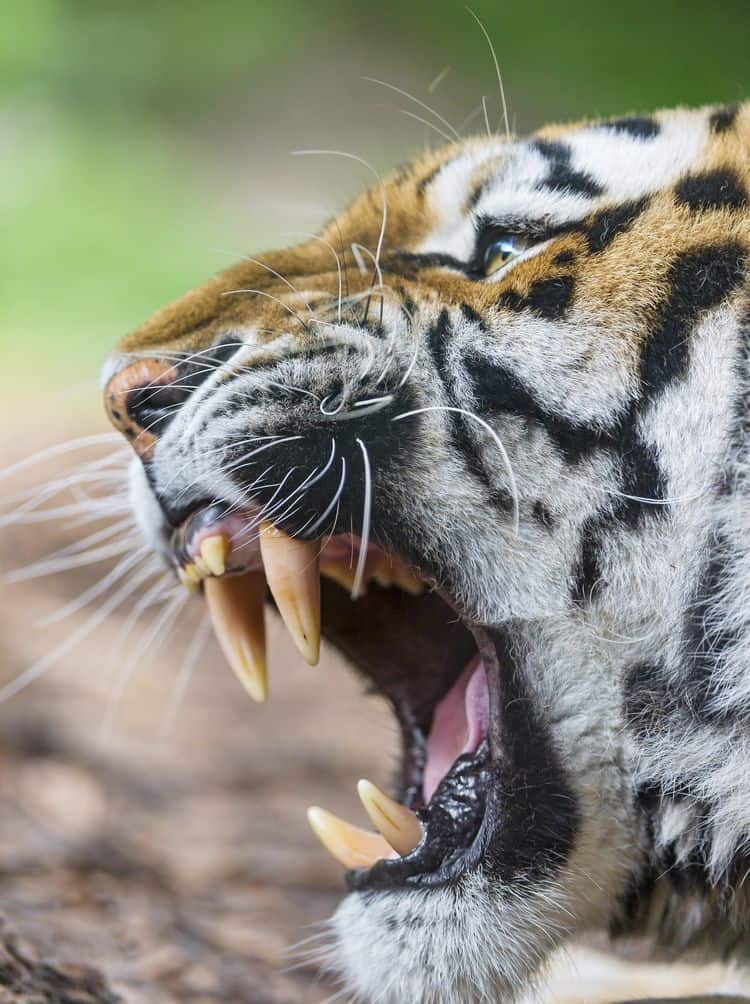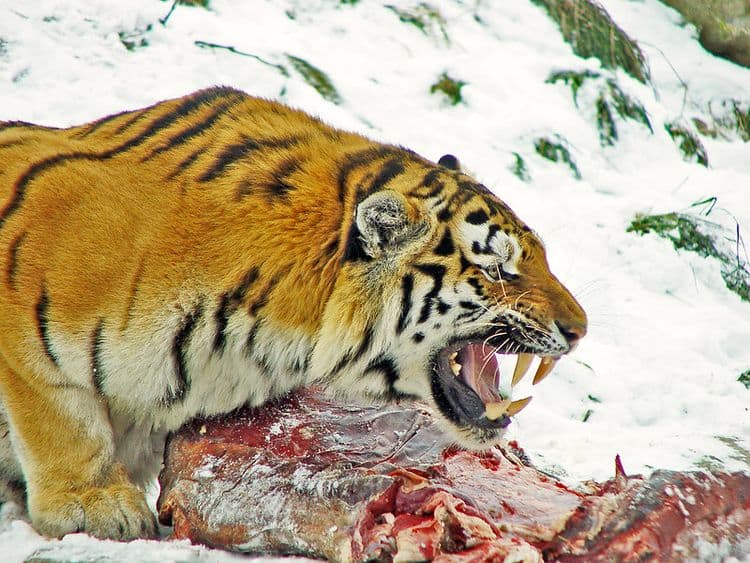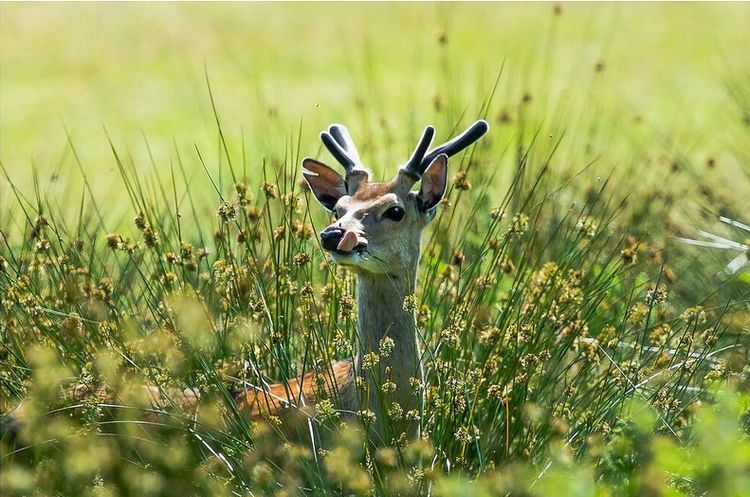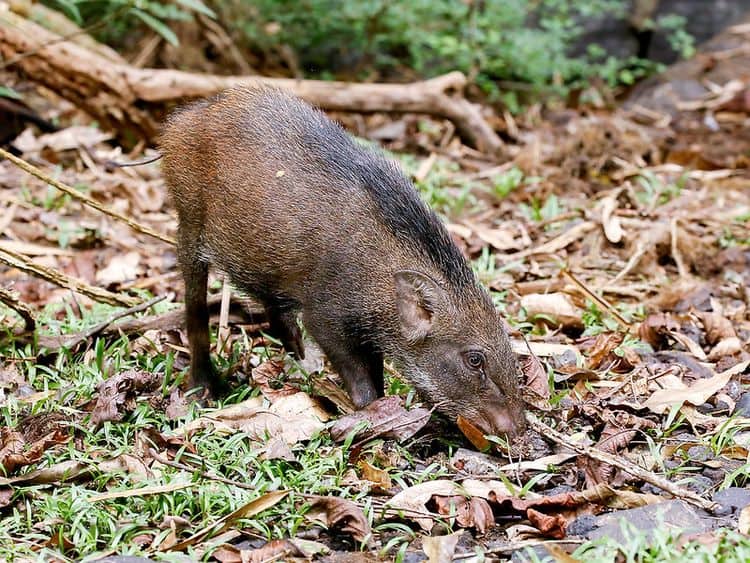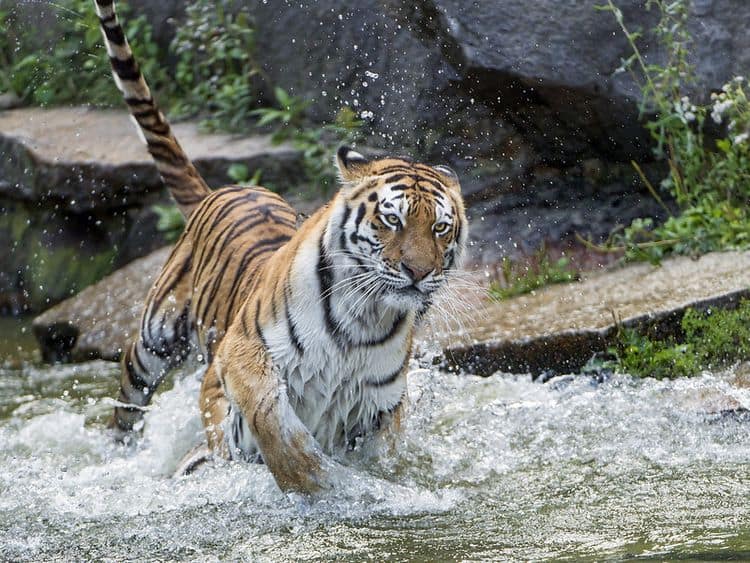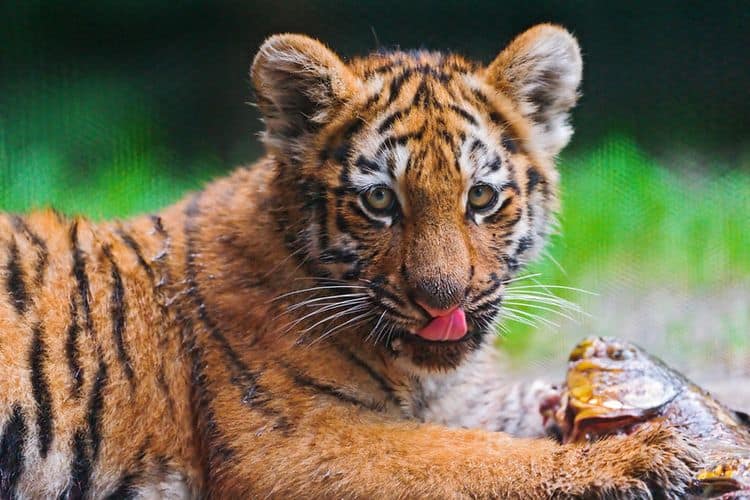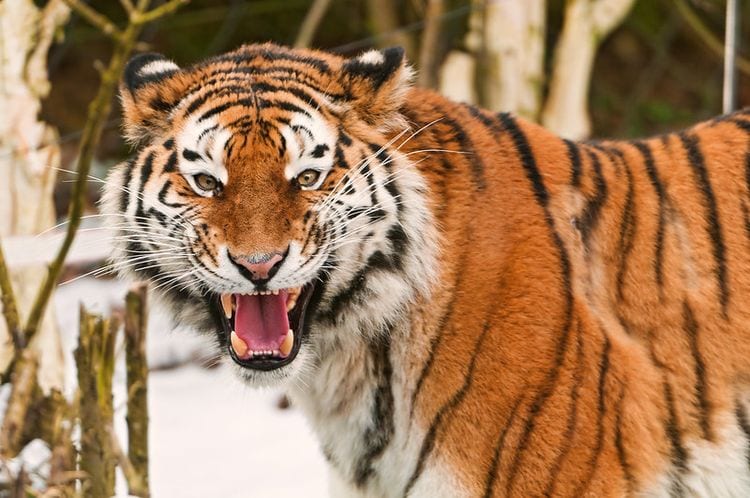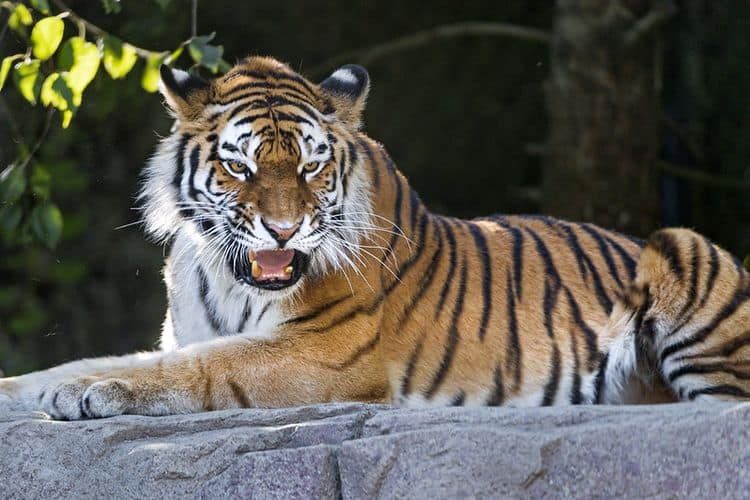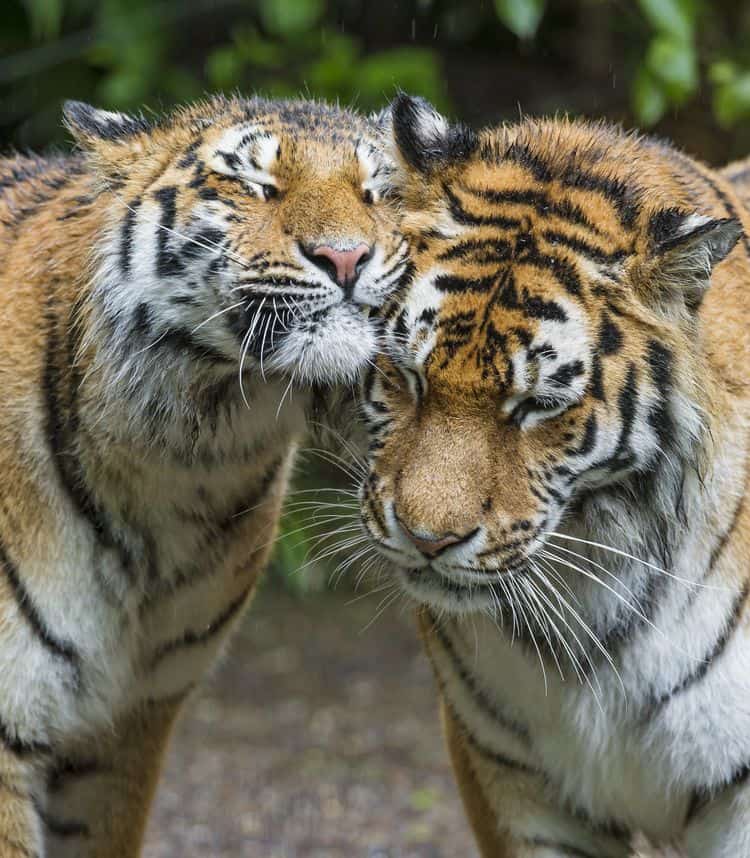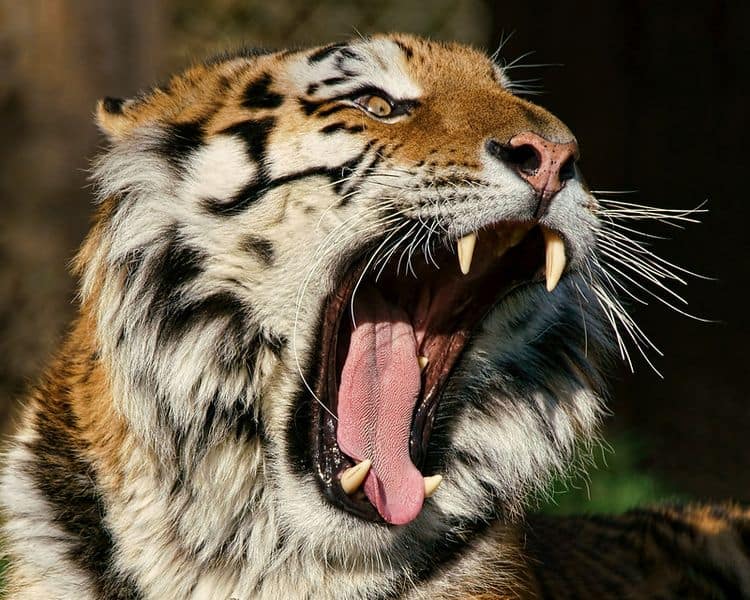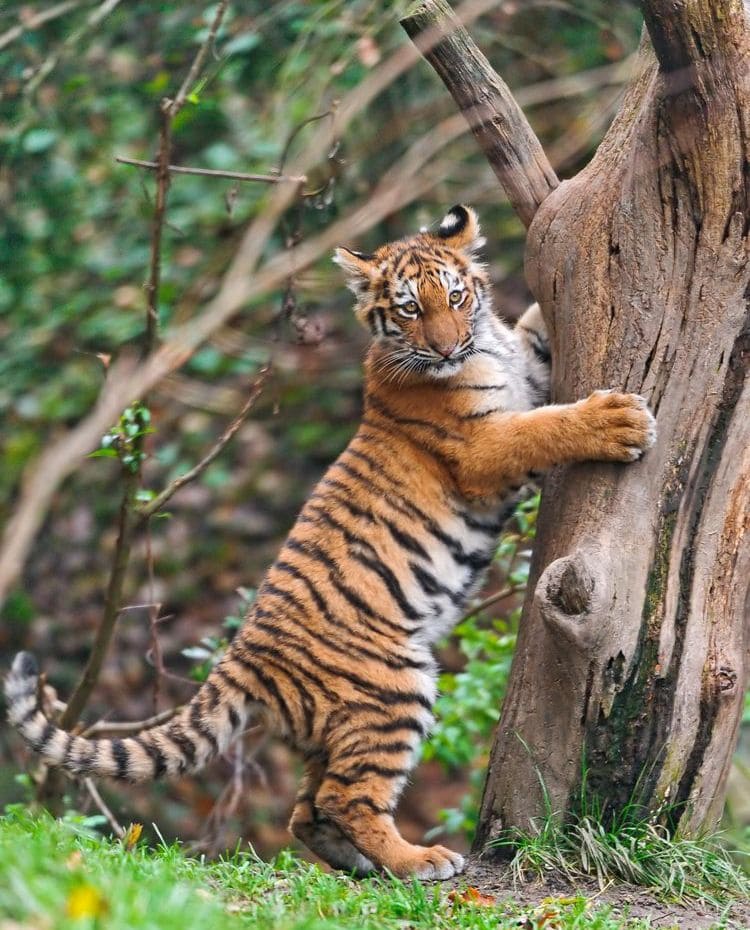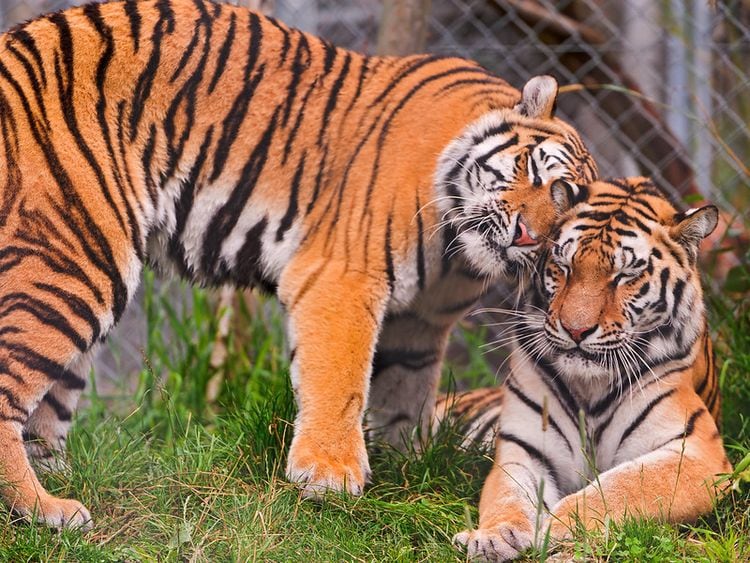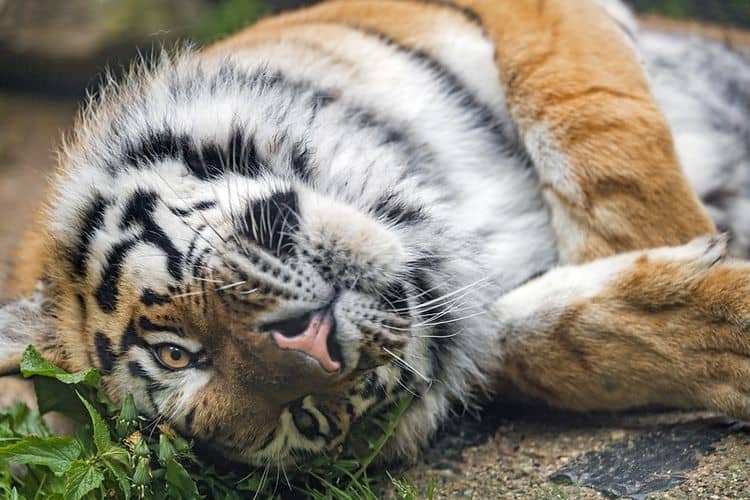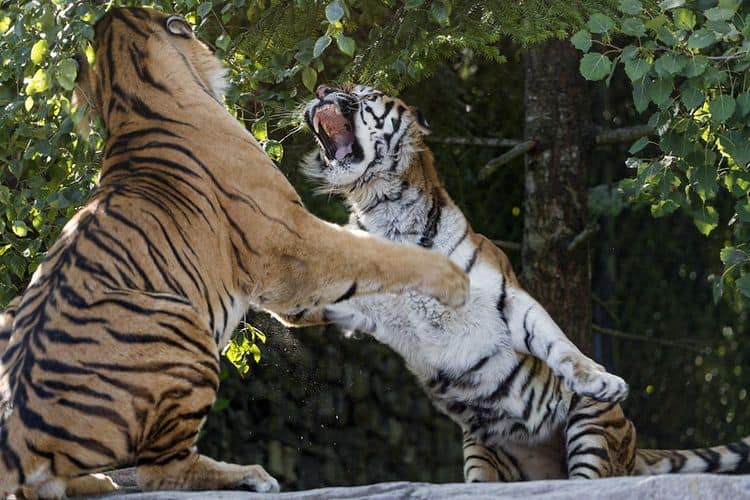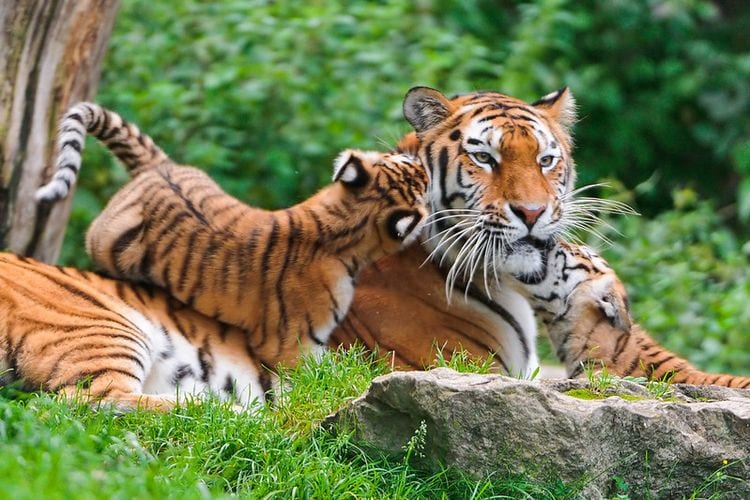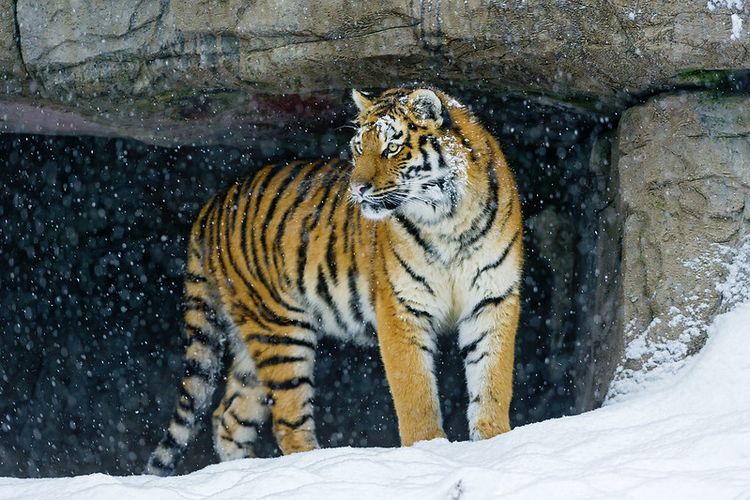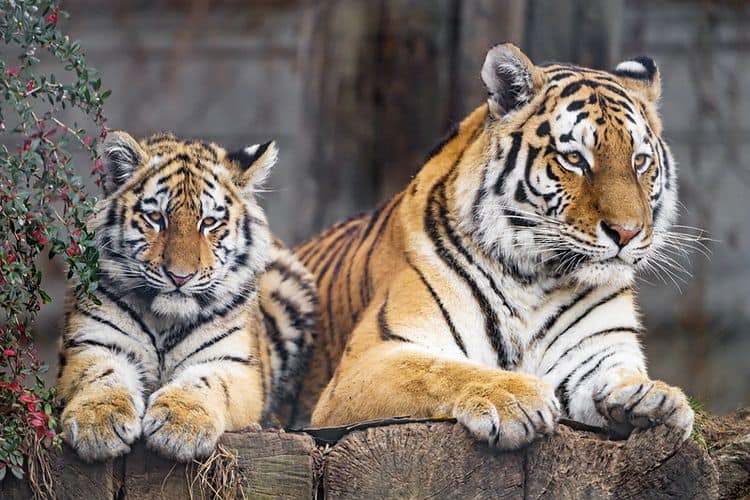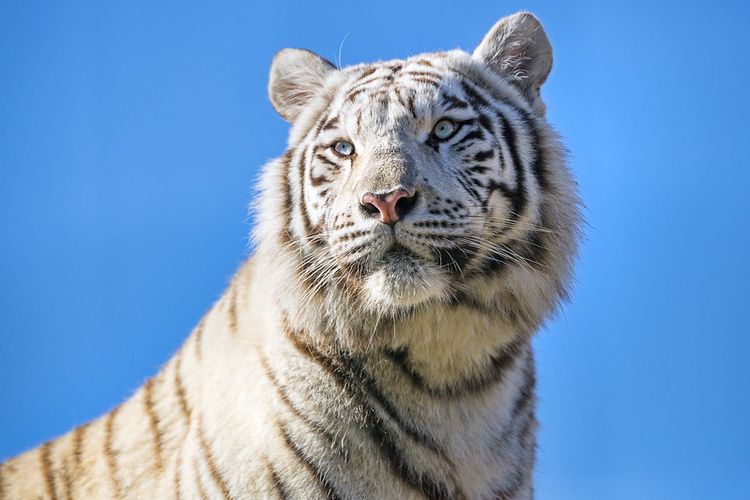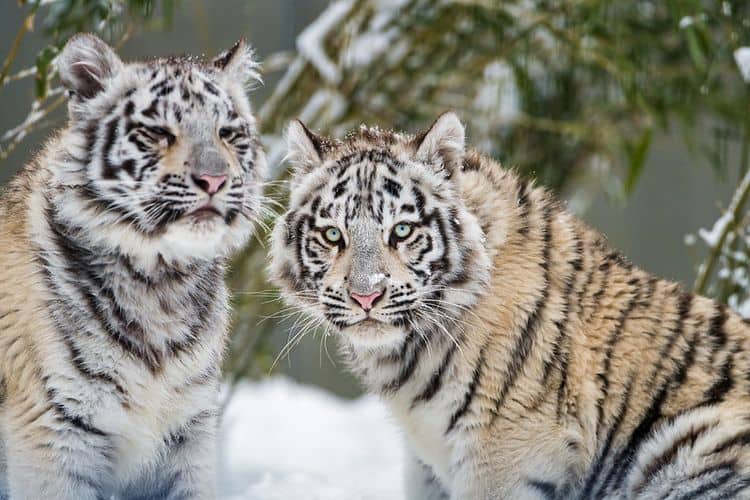Want to know all the basics about Siberian tigers? Here you go:
Siberian tiger’s habitat
Most wild Siberian tigers live in eastern Russia. Mainly in the forests of the Sikhote-Alin mountain range. A few dozens also live in northeast China, and probably in North Korea.
The Siberians are used to snowy winters. That sets them apart from the other tiger subspecies that live in hot climates -in places like sunny India and Indonesia.
The advantage of living so far north, in harsh weather, is that there are not many humans around. So Siberians have large areas to roam and hunt.
Siberian tigers live in the forest or in terrain covered with bushes.
One cat, several names
These cats are called by different names. They used to be called “Siberian,” their most popular name, because they used to roam Siberia, in northern Russia. But they do not anymore.
Siberians currently live farther south, along Russia’s Amur River. So nowadays, many people call them Amur tigers.
Their scientific name has also undergone some changes. Traditionally, they were considered one of nine tiger subspecies. So they had their very own scientific name: Panthera tigris altaica.
But in 2017, researchers concluded there are really only two tiger subspecies. One lives in mainland Asia, and the other on the islands.
So Siberians lost their own scientific name and became grouped with other mainland tiger subspecies. They are now Panthera tigris tigris, like the Bengal tigers of India.
Appearance and cold weather adaptations
Siberians look like other tigers. They are orange with black or dark brown stripes. But they have fewer stripes than their counterparts.
They also have more white fur. The sides of their heads, their throats, chests, inner legs, and bellies are white.
Cold weather adaptations
Siberians have bigger manes than other tigers. That is because unlike their Thai or Indonesian cousins, these cats withstand freezing temperatures of -47 C (-58 F) during winter. And the fluffy mane acts like a scarf.
They also have a thick layer of fat on their flanks and underside.
And their hair grows thicker and longer during winter. In summer, the coat on the Siberian’s back is 0.59 to 0.67 in (15 – 17 mm) long. In winter, it more than doubles its length, reaching 1.6 – 2.0 in (40 – 50 mm).
The Siberian’s body size also helps them cope with the cold temperatures. The larger an animal is, the better it retains heat.
And Siberian’s big, wide, furry paws help them move through the deep snow. Still, rangers have found Siberians with frostbitten toes. The Russian winter is tough, even for these big, furry cats.
Siberians are the biggest cats in the world
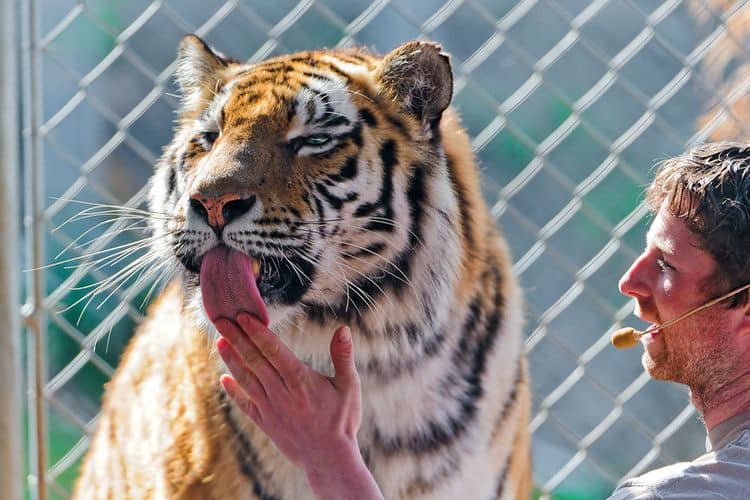
The Siberian tiger is the biggest cat in the world.
Tigers, in general, are the biggest cats, for the average tiger is bigger than the average lion.
But there is some discussion about which tiger is the biggest, the Bengal or the Siberian.
The answer has traditionally been Siberians. But now some experts say Bengals because the recently caught Bengals are a bit heavier than recently caught Siberians.
But that is because Siberians have less available food, so they are not growing to their full potential in the wild. Meanwhile, wild Bengals have plenty to eat.
In captivity, a well-fed Siberian is still much heavier than a well-fed Bengal.
Heaviest recorded tiger: Bengal vs Siberian
The heaviest Bengal on record weighed 857 lb (389 kg). It was shot more than 50 years ago in India when it had just eaten a buffalo. And it measured 10’7″ (3.22 m) from nose to tail tip.
Meanwhile, the heaviest Siberian on record was kept by Joan Byron Marasek, from the United States. In 1986, her Siberian tiger named Jaipur was 10’11” (3.32 m) long from nose to tail tip and weighed… 932 lb (423 kg).
That is the official weight reported by the Guinness World of Records. But off-the-record, a few years later, the owner said Jaipur had gained some extra pounds and weighed 1,025 lb (465 kg).
So the Siberian still wins: it is the biggest cat in the world.
Average size and weight of Siberians
Not all Siberians are that big, though. The average male weighs 397 – 675 lb (180 – 306 kg) and is 6’4″ (1,95 m long). That is without the tail. The tail adds 3 ft (1 m).
As for height, they are about 3 ft high (1 m) from ground to shoulder.
Female tigers are much smaller, measuring 8 in (20 cm) less on average and weighing only from 220 to 368 lb (100-167 kg).
Don’t miss: Which of These Newly Discovered Animals is Your Favorite?
Hunting skills
Siberian tigers are not great runners, so to hunt, they rely on stealth.
They hide behind trees or bushes. They blend in with the background thanks to their stripe camouflage.
Then, Siberians approach their prey crouching, silently. When they are close enough, they pounce out of the blue, aiming to land on their prey’s back.
Siberians only catch 1 out of 10 preys. If they do not succeed when they pounce, they rather look for another prey instead of chasing the fleeing one.
But when they do catch it, they bite the prey’s throat, which is a fast way of suffocating it.
Then they drag the kill to a safe place, like a cave or behind bushes. And they begin to eat it.
A Siberian tiger can eat up to 90 lbs of meat in one sitting, but that is when they are unusually hungry.
If their kill is big, they keep it hidden. They will return to it in the following days until they have eaten it all, which usually takes from 6 to 9 days. That sometimes leads to conflict with other animals, such as bears, because they steal the tiger’s hidden lunch.
Tigers are almost always on the move, day or night, looking for prey.
Prey
Amur tigers need to eat around 20 lb (9 kg) of meat every day.
They eat a bit less during the summer. In that season, they are content with catching one large animal per week, eating an average of 17.4 lb (7.89 kg) of meat each day.
In winter, they ramp it up and kill every 5 or 6 days, eating slightly more per day, like 23 lb (10.3 kg).
Since they eat so much, they prefer to hunt big animals. Their favorite preys are wild boar, Siberian roe deer, and sika deer. That trio makes up for 90% of the Siberian’s diet.
They can also eat moose, Siberian musk deer, Manchurian wapiti, young brown bears, and less often, young Asiatic black bears.
And if they want a snack, rabbits, hares, birds, and mice will do. Or fish, like salmon. Siberians, like all tigers, like water (it helps them cool off during the summer months), so if hunger strikes, they can resort to fishing.
Siberians can stray from their diet and improvise, if need be. If they cannot find food, they will venture outside their territory and attack livestock or farmer’s dogs.
Territory

Adult males live alone, with each needing an area of about 772 mi2 (2,000 km2) to roam and find prey. Their territory can overlap with the territory of females.
Females, too, defend their territory from other females. Each needs about 96 – 174 mi2 (250 – 450 km2).
But if there is a shortage of land, sometimes a mother and an adult daughter share their territory.
Communication
Since Siberians live alone, they have ways to communicate with each other from a distance.
They mark their territory with scents. They spray trees, rocks, and ground with their musk. The scent tells other tigers a lot of information, like who left it, their gender, and when it was left.
Siberians also rely on visual cues. Much like house cats, they scratch the ground with their hind legs and scratch the bark of trees. Those marks let other tigers know that they have entered someone else’s territory.
And they can also communicate through sounds. They growl, roar, snarl, moan or hiss, again, like house cats. Each sound has a unique purpose. Some they use to attract romantic partners, others to scare the competition away.
Romance
When a Siberian tigress is ready to mate, she roars, calling potential suitors. She also sprays the ground and trees with a strong scent that informs males that she is available.
Sometimes several males answer her call, in which case they must battle it out.
Once there is a winner, the couple flirts. Sometimes she plays by rolling on her back in front of him; other times, she attacks him.
The tiger waits patiently, wooing her until she accepts him.
They usually spend less than a week together. Then the male goes back to his turf.
There is not a specific mating season. Tigresses can give birth at any time during the year, although it is usually between April and June.
Females tend to mate every two years.
Cubs
Gestation lasts from 3 to 3.5 months. Then the tigress has a litter of usually 3 cubs, but can be anywhere from 2 to 6. She takes care of them alone.
While pregnant, the tigress looks for a safe place to raise her litter. She prefers caves and hard to reach places in the rocks. That way, her young will be safe from predators while she is out hunting.
Half of her cubs will die during the first year either because of predators, sickness, or lack of food.
The cubs are born blind and only open their eyes after a week. Their teeth start to grow at week two.
Cubs play a lot with each other, which sharpens their hunting skills. For the first six months, they will mostly live on their mother’s milk.
When they are three months old, they start venturing outside the den. They will even trail behind their mother while she hunts. But it is only after 1.5 or 2 years that they will be able to hunt big preys by themselves.
The young live with their mother for the first 2 or 3 years of their life. Then, they leave and find their own territories.
The females will be ready to mate when they are 3 years old, the males at the same age or a year older.
The famous white Siberians
Thought all Siberians were white? Lots of people do, but Siberians are actually orange.
The confusion arises because some zoos mislabel white tigers as “Siberians.”
It is Bengal tigers that sometimes can be born white due to recessive genes. They have white fur with brown stripes and blue eyes.
In the 1950s, a hunter killed a Bengal tigress in India. She had several cubs. The hunter killed all the normal-colored ones and took with him her only white cub. It was named Mohan.
Mohan was brought up in captivity. And all the white tigers in zoos descend from him.
Zoos soon found out that the stunning white tigers are quite the crowd-pleasers, so they bred them.
Yet, for their cubs to be born white, the white tigers must be inbred. Mohan was mated with his daughter.
Zoos also mate white tigers with Siberians. Partly because Siberians with their fluffy manes and big size are more impressive. And partly because Siberians naturally have more white fur than other subspecies.
So that is where the misnomer comes from. Some zoos mislabel these unusual cats as “Siberians,” when in reality, they are a mix of Bengals and Siberians.
White Bengals are overrepresented in zoos, but they are not common in the wild.
And when it comes to white pure Siberians tigers, as far as the scientific world is concerned, they do not exist. Although local Russians do say they have seen a white Siberian tiger in the wild, but there is no proof, yet.
Life span

In zoos, Siberians live from 10 to 12 years. In the wild, up to 15 years. And if they live in sanctuaries, then they are in luck, for they can live up to 25 years.
Population
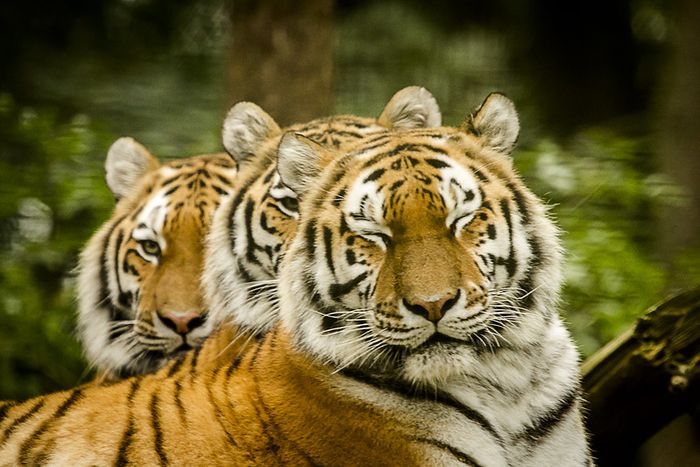
Siberian tigers are at risk of extinction.
During the 20th century, they were hunted. Their numbers plummeted from tens of thousands to 40 individuals in the wild.
Fortunately, the Russian government stepped in. And in the 1940s, it was the first country to ban hunting tigers and started to protect them.
By 2005, the population was recovering. Russia reported it had 393 wild Siberians in its territory.
And the numbers have kept rising. In 2018, Russia’s Ministry of Nature estimated there were about 500 adults and 100 cubs in the wild. And they expect that by 2023 there will be 700 tigers.
China also has Siberians. In 2005, it had approximately 20 wild individuals.
Read next: 12 Animals Everyone Feared Extinct, But Aren’t
Threats
The Siberian tiger may be better off than its cousins, whose populations are declining. But Siberians still face threats.
The main one is illegal logging. Logging causes a loss of habitat. That means fewer deer and other animals. And tigers are left with less prey to eat.
Another big threat is poaching. Tigers are hunted for their body parts, which are sold in the black markets of China.
The problem is that Chinese medicine uses tiger parts as remedies. And since it has been doing so for thousands of years, it is now part of Chinese culture and difficult to change.
And the Chinese government has been wavering back and forth when it comes to protecting wildlife.
They passed laws to protect wild tigers decades ago and campaigned to find substitutes for tiger parts in medicine. Yet in 2018, they again legalized the use of tiger bone as medicine.
Russia, on the other hand, has been actively protecting their tigers.
Read also: 9 Endangered Animals You Won’t Want to Part With
New protected areas

Both Russia and China have created national parks to protect the Siberian tiger’s habitat.
Recently, Russia announced the creation of three new environmental corridors. The corridors give tigers an extra 100,000 has (400 mi2 /1,000 km2) of forest.
The corridors also connect the national parks. That way, the tigers from one area can interact with the tigers of other areas. This means they can breed with other populations. That is important because it stops inbreeding, strengthening the gene pool.
Russia is also creating buffer zones around the parks to keep the tigers safer. And it just established a huge new national park around the Bikin River (1,160,500 has /4,480 mi2 /11,605 km2).
On the other side of the border, the Chinese government announced it would create 10 new parks to protect species.
Among them is the Northeast Tiger and Leopard National Park. It has 1.46 million hectares (5,640 mi2/ 14,600 km2), which is almost twice the size of Yellowstone National Park. This Chinese park is the world’s largest protected habitat for Siberians. And it will soon be connected to Russia’s protected areas via ecological corridors.
When this Chinese park was created, 27 wild Siberians tigers lived in that area. And to everyone’s happiness, by 2019, the national park had 10 new cubs.
Further measures to protect the tigers
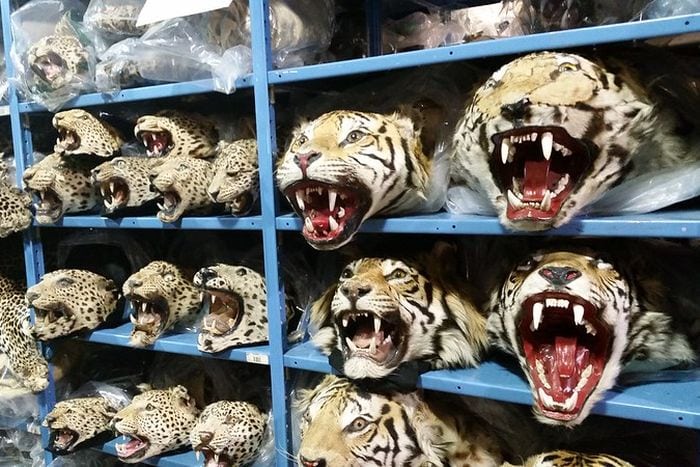
Law enforcement
In 2010, from 50 to 70 Siberian tigers were illegally killed in Russia.
Three years later, Russia toughened the punishment for poachers and wildlife crimes. The measures have worked, and poaching in the country is down to 15- 20 Siberians per year.
Furthermore, Russia, along with the WWF, has trained more than 150 rangers that patrol the parks to catch poachers.
The duo -government and WWF- has also led 36 wildlife crime investigations of the late. They have not only arrested a fur trafficker but also illegal loggers.
China, too, has toughened its sentences for poachers. The last time a man was caught with a tiger carcass – in 2011-, he was sentenced to five years in prison.
Enlisting the locals
The Russian government has done campaigns so that locals do not view tigers as an enemy, but as an animal to be protected.
And if a tiger eats a farmer’s livestock, horse, or dog, the government immediately pays the farmer back.
Rarely, but sometimes, Siberians do not find enough to eat in their territory and venture out and kill livestock. That puts them at odds with farmers who would traditionally shoot them. But now killing tigers is completely outlawed. And to further stop farmers from retaliating, the government quickly compensates them for their loss.
Recently, a tigress had been killing livestock repeatedly. Thus, the government caught her and her cubs. Since she had gotten used to the easy prey, she was not going to change her ways and would probably end up shot. So she was taken to a reserve. Her very young cubs were taken to another, where they are being raised wild. As soon they can hunt on their own, they will be set free.
China, too, has been re-educating its locals. And after creating several parks to protect the Siberian, the Chinese government hired 325 locals to act as rangers. Now those people, instead of setting up traps in the forest, help preserve the tigers.
Programs to help Siberians
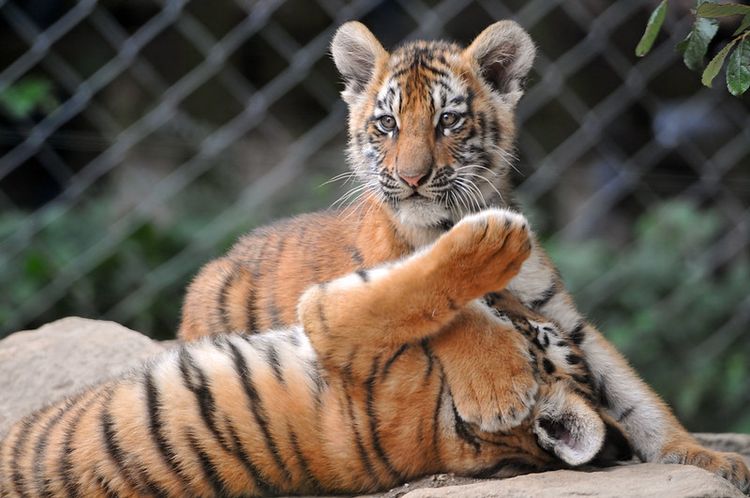
Aside from protecting the tigers themselves and their habitat, another thing that is being done is breeding them in captivity. The Species Survival Plan (SSP) has 160 Siberian tigers that are being bred.
And now you know all the basics about Siberian tigers.
More Articles
